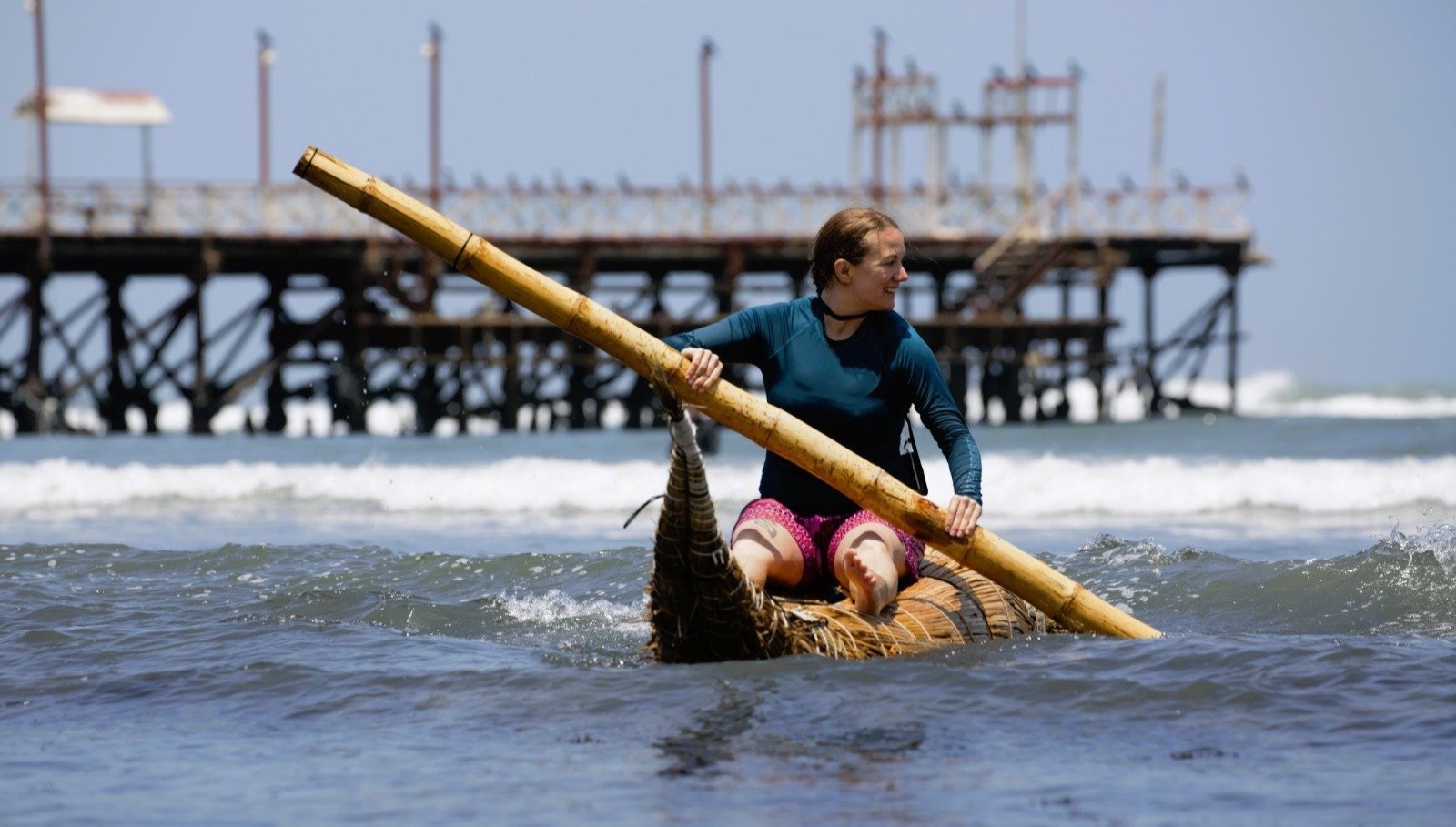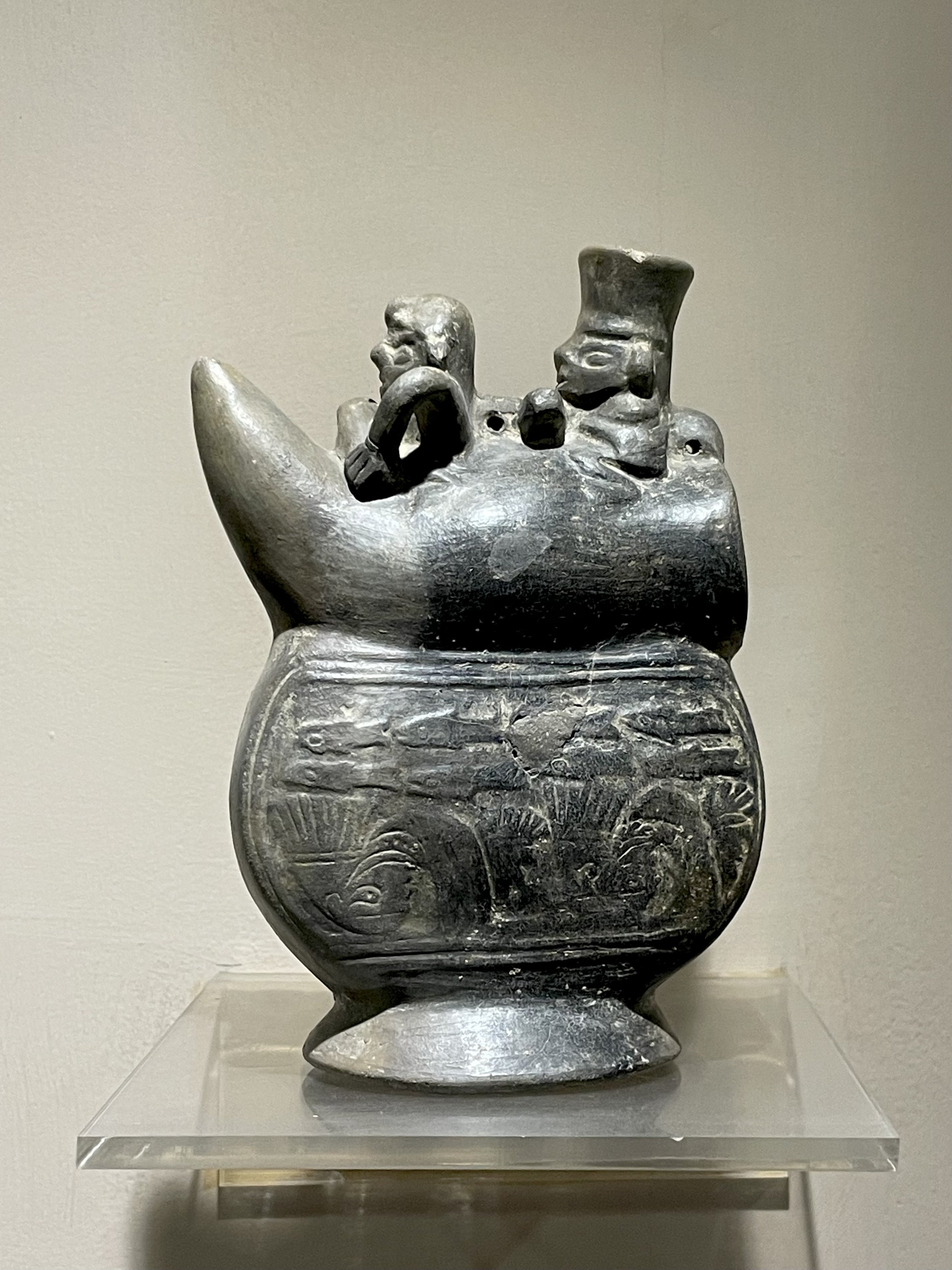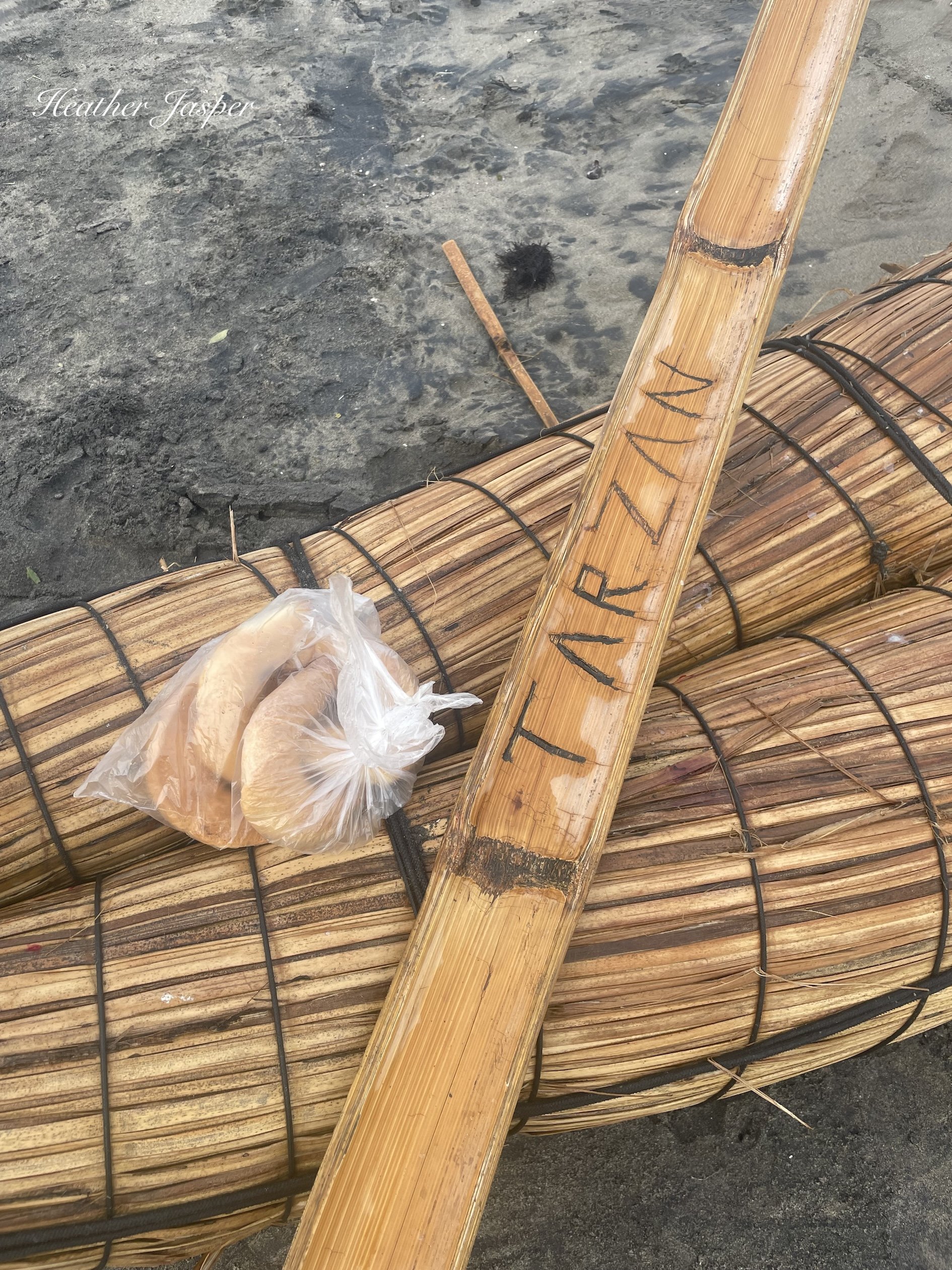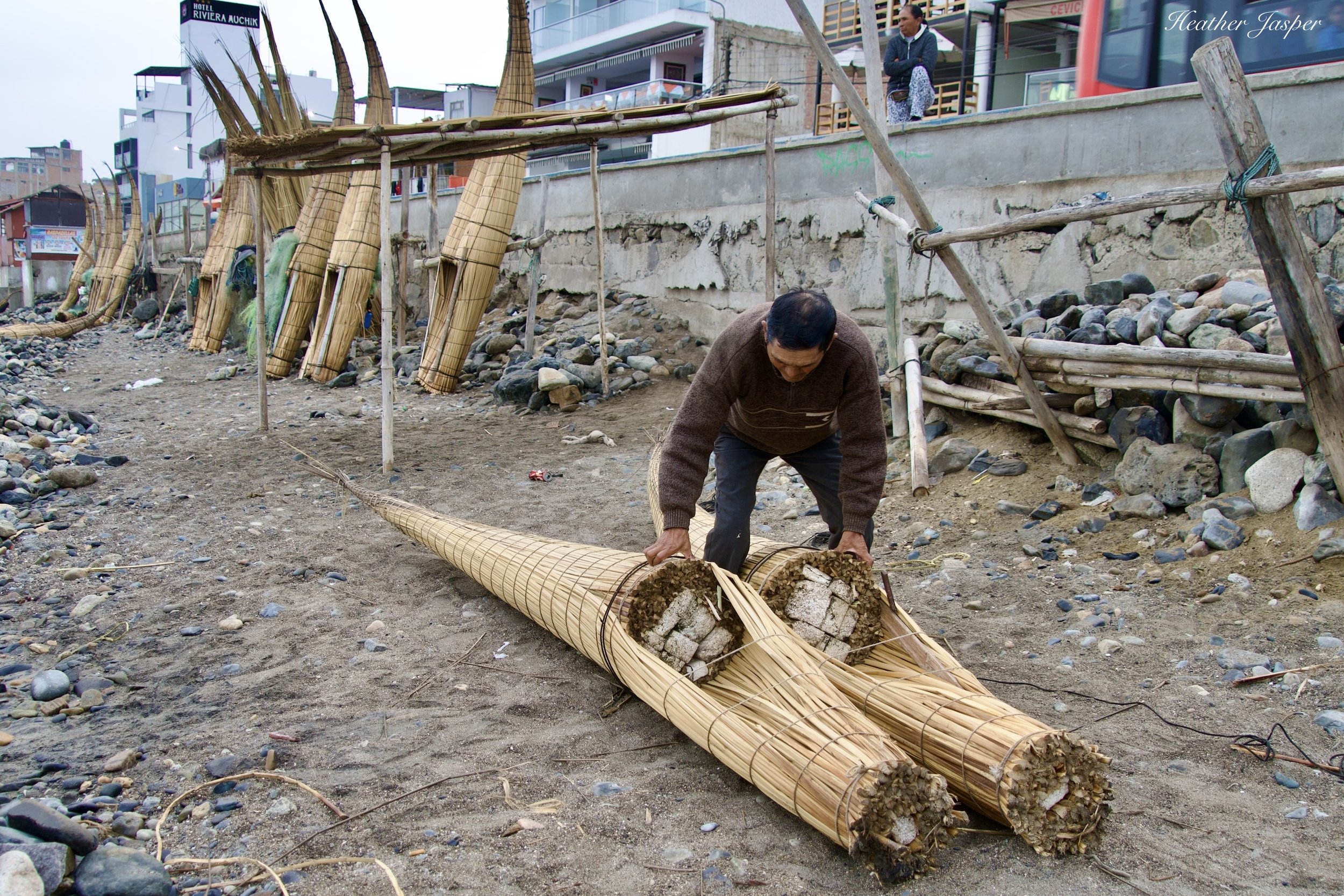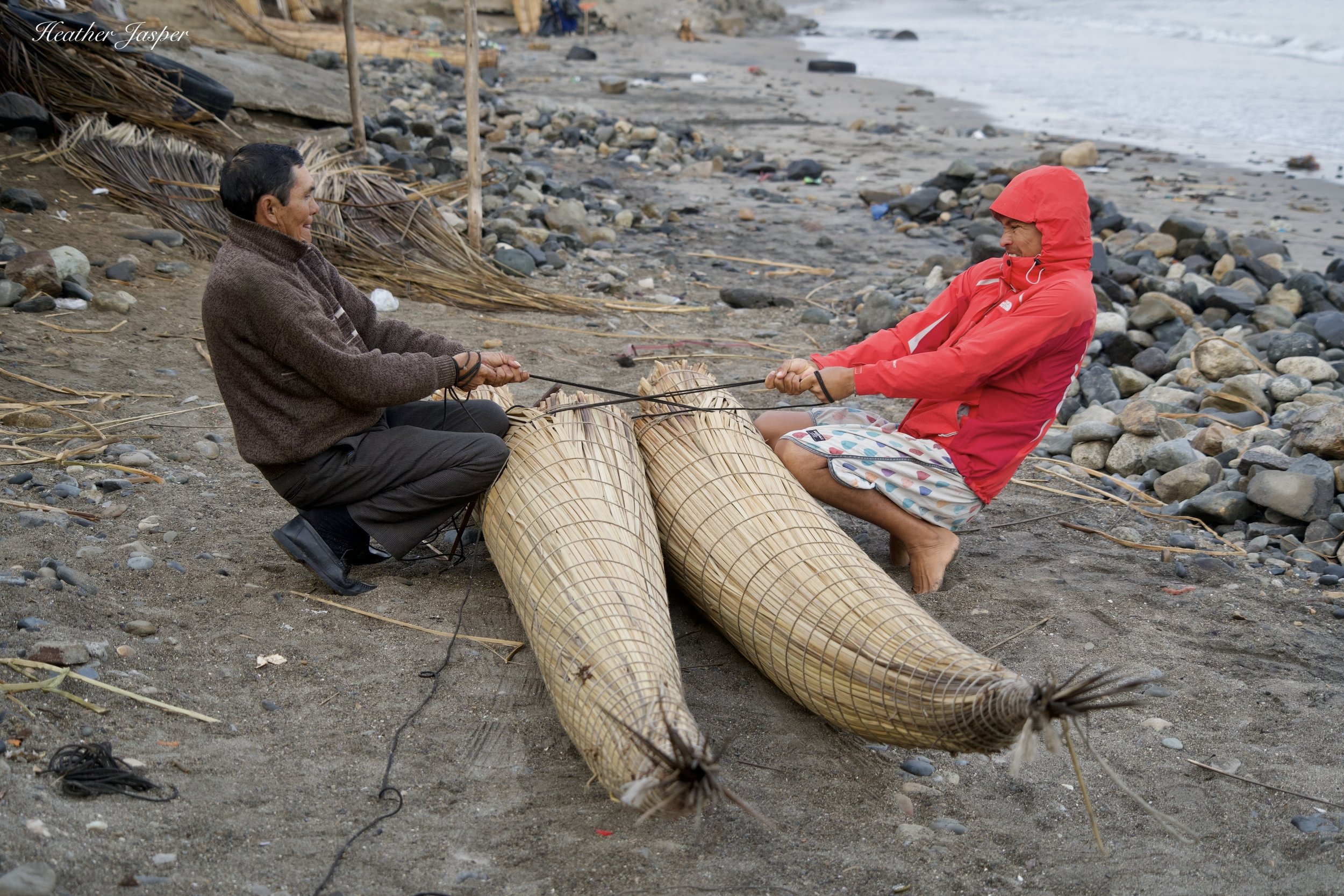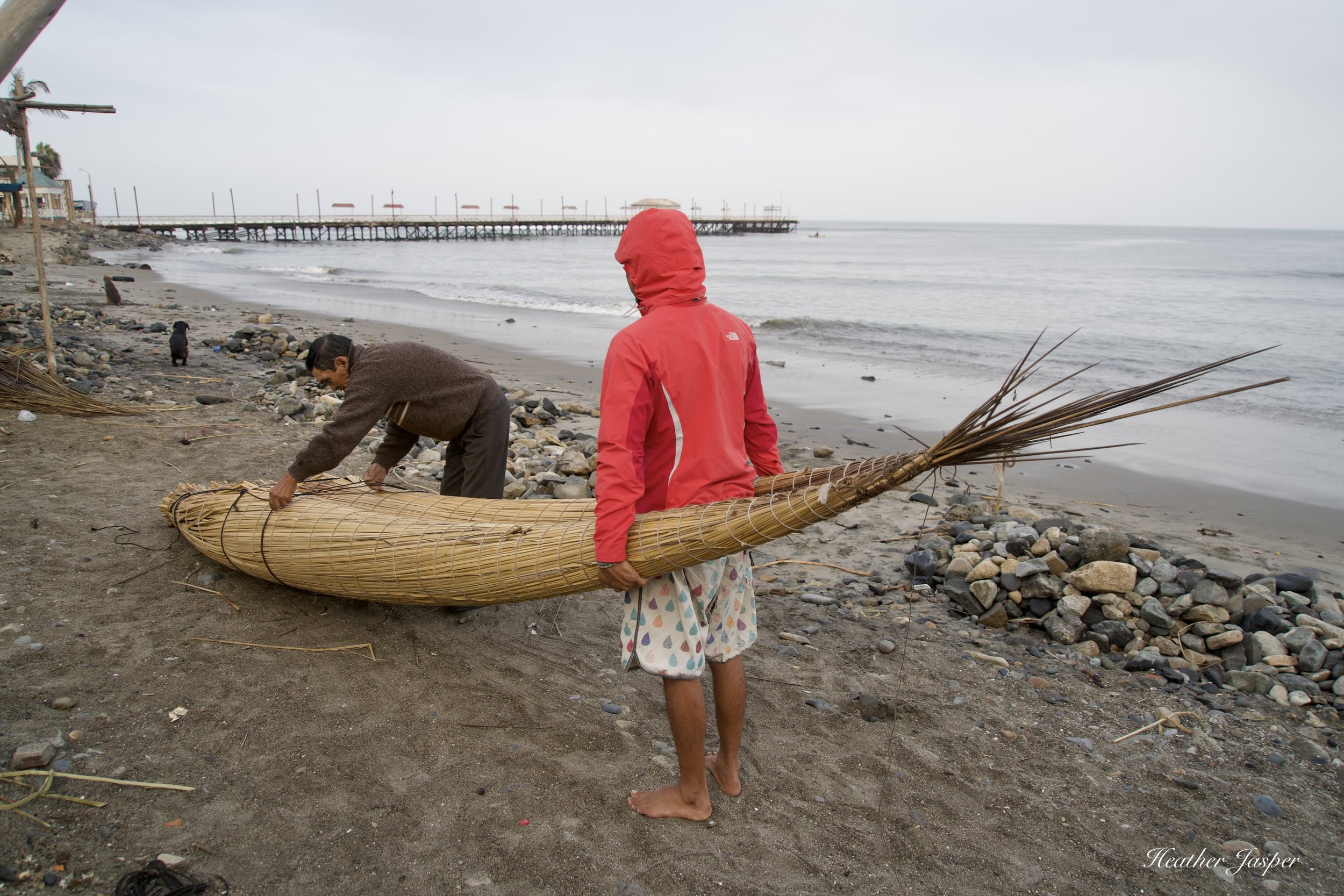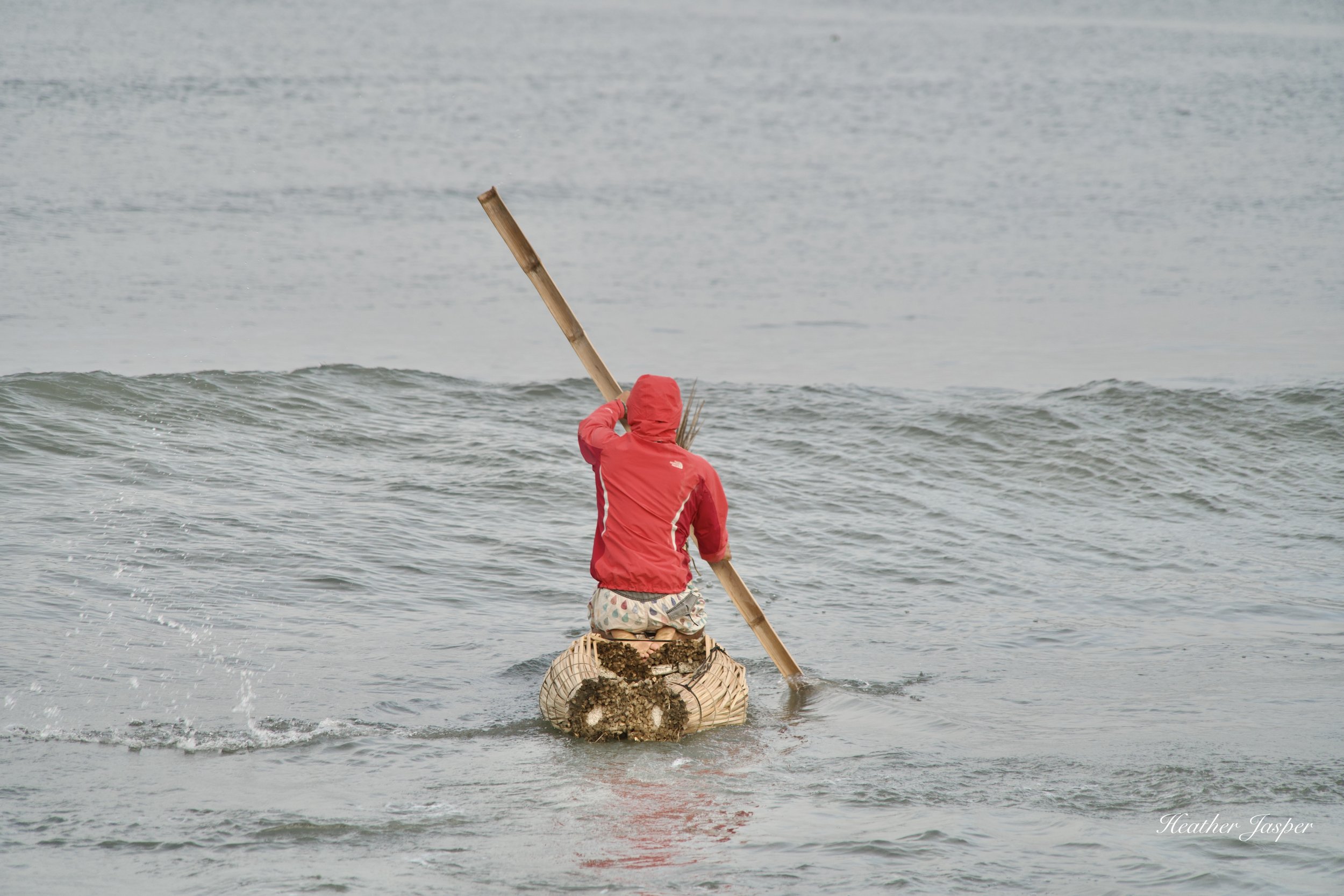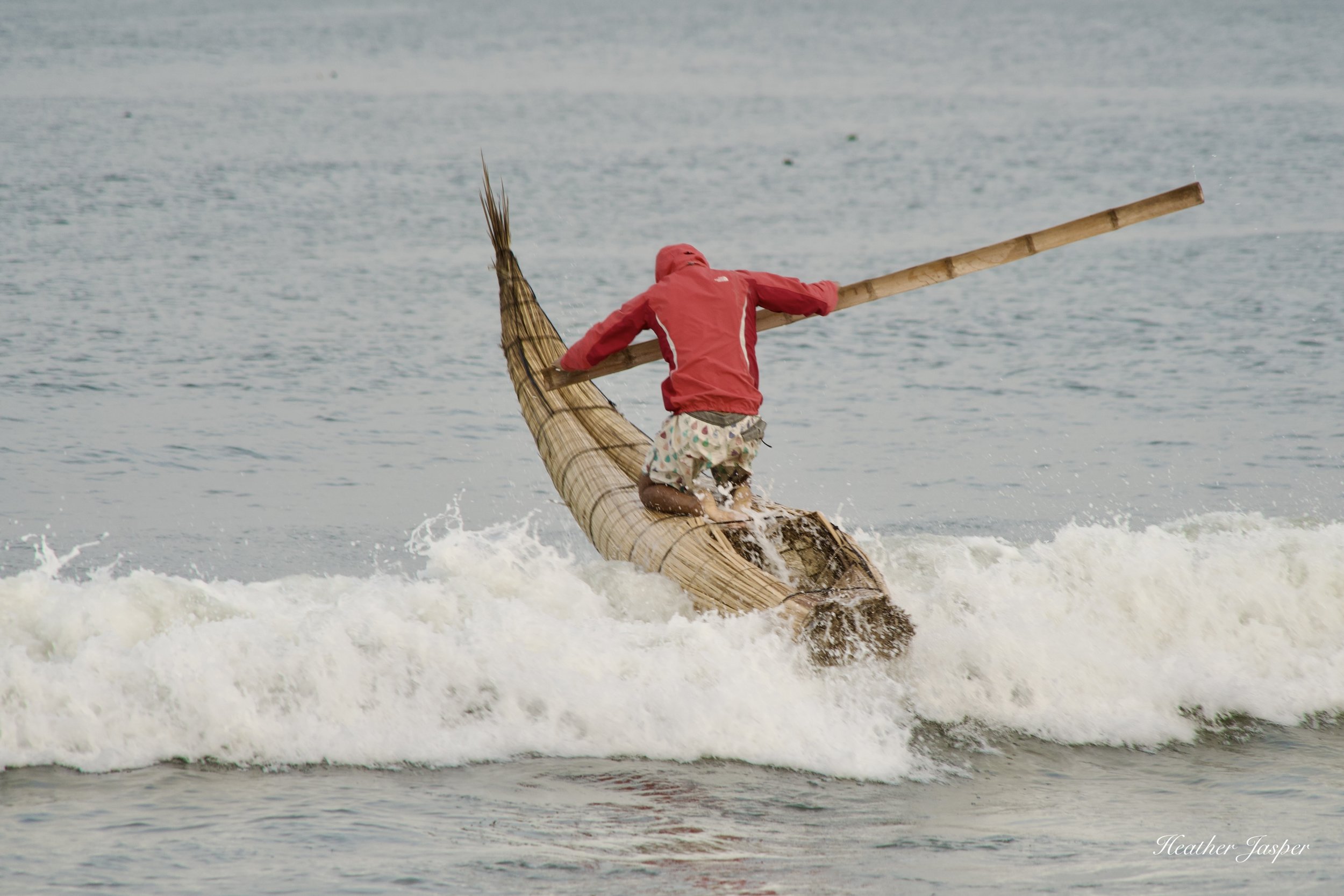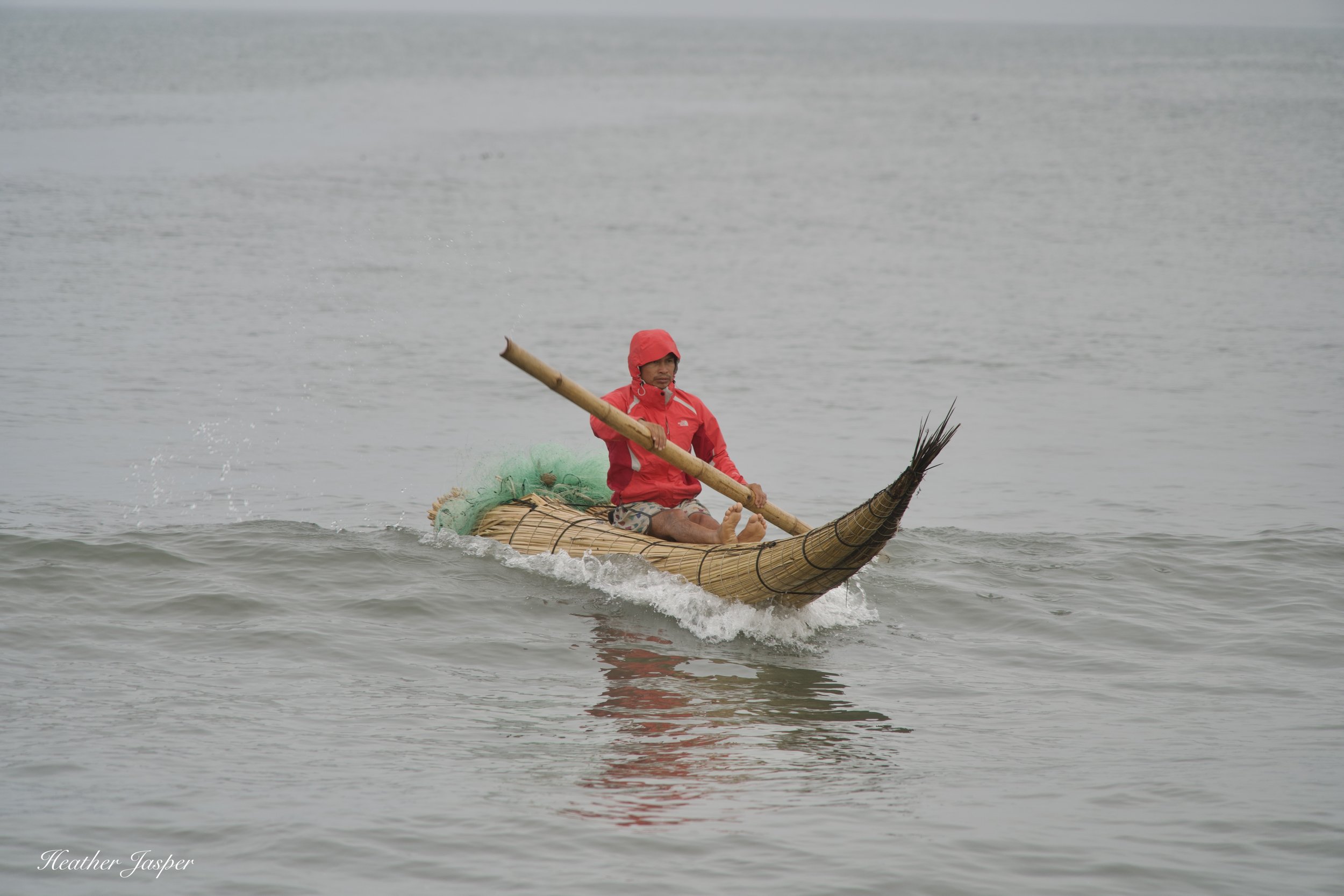A 3,500 year old surfing culture
The caballito de totora is a lot of fun but also a lot less stable than I expected. It felt easier to flip than a kayak. Photo: Carlos Antonio Ferrer
Read my BBC article on surfing in Huanchaco, Peru
Surfboards as we know them originated in Polynesia.
Cave paintings from the 12th century show people riding waves on surf boards in Polynesia. Archeologists have shown that Peruvians used the caballito de totora at least 3,500 years ago – but is it surfing?
A fisherman comes back to the Huanchaco beach after gathering in his fishing nets.
So what exactly is a Caballito de Totora?
The used to be called “tup,” (pronounced toop), in Quechua but everybody in Peru now calls them by the Spanish word “caballito” which means little horse. They are made with totora reeds, which grow in brackish ponds near the coast. If you read my Puno blog post, you saw they have islands built of totora. The totora on Lake Titicaca is round, while the totora that grows at sea level has a triangle shape.
The caballito is a bundle of reeds, which used to be tied together with rope made from llama fur. Llamas won’t live in the hot climate of the coast, so ancient coastal people had to trade with the people of the Andes. The paddle is a half slice of a bamboo pole. Bamboo doesn’t grow on the coastal desert either, so that came from trading with tribes in the Amazon.
The caballito was made with all of Peru: coast, mountains, and rainforest.
When the sea is calm, fishermen sit on the caballito, but when the waves are big they kneel like whitewater canoes.
The oldest archeological evidence of the caballito is 3,500 years old and the reeds were tied with cotton cords, not llama fur. However, later archeological finds showed the use of llama fur ropes. Archeologist Dr. Daniel Sandweiss of the University of Maine theorizes that the caballito was used as much as 5,000 years ago, though definitive evidence has not been found yet.
Today, nylon cord has replaced llama fur ropes, but everybody still uses the bamboo pole. I didn’t see a single paddle in my week of watching fishermen (and currently they are all men, though women have fished in the past). Not one canoe paddle or kayak paddle. Just bamboo poles.
I asked several fishermen why they don’t get wooden boats or at least modern paddles. The first thing each of them said was that just wasn’t how it was done. Fishermen have always used caballitos in Huanchaco. That’s their culture, their tradition, their heritage, and they want to keep it that way.
People surf on caballitos both sitting and standing, but either way it’s still surfing. The bamboo pole is used for balance on the way back to the beach, not for paddling as it’s used on the way out. This video shows how they surf standing.
The second thing they mentioned – every one of them – was that the waves are usually too big for regular boats. Only with the caballito can they punch through the waves to get out to their fishing nets and only with the caballito can they surf their way back to the beach. Only a couple of the fishermen I spoke with surf for fun, but they were all quick to point out that caballitos are for surfing too.
Human habitation has encroached on so much of the coast that most of the wetlands where totora used to grow have been drained and built over. The fishermen of Huanchaco now have ponds dug on land owned by the government. It’s land set aside for growing totora and safe from development – so far.
Totora grows relatively slowly. After the reed is cut an inch or two above the surface of the water, it takes about a year for it to grow back to its full height. Even with land set aside for growing totora, there isn’t enough to go around. Every family has several ponds where they cultivate totora, but they still don’t have enough to build a new caballito every month or two – which is about how fast they wear out. Currently, most fishermen stuff the inside of their new caballitos with Styrofoam chunks or discarded plastic bottles. They’re the only materials accessible that are as light as totora.
Due to totora shortages, fishermen use styrofoam or discarded plastic bottles as filler.
The triangular reeds are completely waterproof, so only the cut end can absorb water. When it’s dry, totora is incredibly lightweight. Most fishermen have two or three caballitos so that they can let them dry a day or two between use. They’re set on the beach with the cut end down, to drain out any water that was absorbed into the reed. With filler, they’re not as structurally sound as caballitos that are 100% totora. Some fishermen lash bamboo along the sides for stabilization.
Carlos “Huevito” Ucañán
Huevito has represented Huanchaco as far away as Australia, where he took over a hundred kilos of dried totora to show Australians how to build and surf on caballitos. (Please click on that link. It’s an amazing video of him surfing a caballito in Australia).
I spoke with Huevito about what it was like to surf in Australia.
Huevito and his nephew Cucho (Joel) both gave me an introduction to Huanchaco surfing culture. It involves a lot of surfing, a lot of talking to fishermen, a lot of beer and a lot of ceviche at Huevito’s father’s restaurant Warique El Buzo. Everybody there seems to have nicknames. Huevito, Cucho and Buzo are three generations of the same family. I also made friends with a fisherman that everybody calls Tarzan. It took days before anybody would tell me that his real name is Luis.
A gift from Huevito
Tarzan was very proud to tell me that Huevito had gifted him this bamboo, with his name burned in. The rolls in the bag were his breakfast as he left to set out his crab traps. Part of his catch is below.
Building a caballito, according to Huevito, can take as little as 40 minutes.
I think that only applies if you’re highly experienced and being filmed in Australia. Normally, it takes two or three people a couple of hours. It’s also faster if you have enough totora. If you have to use some kind of filler, the process is a lot more awkward.
I missed out on watching Edwin Blas Arroyo and his uncle build the two halves of a new caballito when I was in Huanchaco, but I got to see them assemble the final product the next morning on the beach. They pulled the nylon cord as tight as they possibly could, but after Edwin came back from fishing they still spent another half hour tightening it up.

